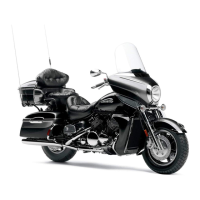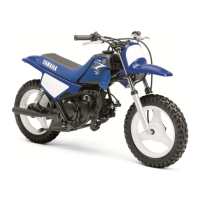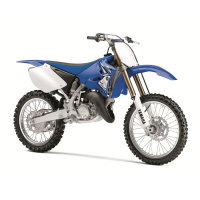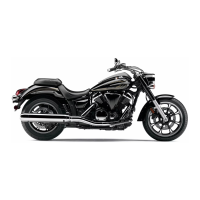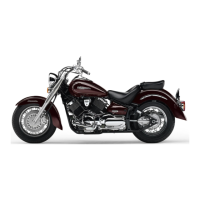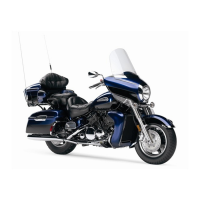
Do you have a question about the Yamaha Venture XVZ13TFS and is the answer not in the manual?
| Compression Ratio | 10.0:1 |
|---|---|
| Fuel System | Fuel Injection |
| Transmission | 5-speed |
| Final Drive | Shaft |
| Front Suspension | Telescopic fork |
| Rear Suspension | Swingarm |
| Front Brakes | Dual disc |
| Rear Brakes | Single disc |
| Front Tire | 130/70-18 |
| Engine Type | Liquid-cooled 4-stroke, DOHC, 4-valve V-4 |
| Bore x Stroke | 79 mm x 66 mm |
| Fuel Delivery | Electronic Fuel Injection |
Key duties and knowledge required for safe motorcycle operation.
Guidance on riding defensively, visibility, and rider awareness.
Importance and types of protective gear for rider safety.
Guidelines for safely adding weight or accessories to the motorcycle.
Precautions related to fuel handling and exhaust fumes.
Identifies critical safety and information labels on the vehicle.
Identifies components visible from the left side of the motorcycle.
Identifies components visible from the right side of the motorcycle.
Locates and explains primary controls and dashboard instruments.
Operation of the ignition, lighting, and steering lock mechanisms.
Explains the function of dashboard indicator and warning lights.
Details the speedometer, odometer, tripmeters, and clock functions.
Operation of handlebar switches, clutch, brake levers, and pedals.
Procedures for fuel tank cap, fuel gauge, and fuel cock.
How to activate and use the cruise control system.
How to adjust the front fork spring rate.
Proper use and safety warnings regarding the sidestand.
Use and precautions for the 12-V DC jack and terminals.
Identifies parts and basic controls of the audio/CB system.
How to operate the audio system, adjust settings, and play media.
How to use the CB radio, adjust volume, squelch, and select channels.
Lists essential items to check before riding the motorcycle for safety.
Procedures for starting engines and fundamental riding actions.
Guidelines for engine break-in and safe parking procedures.
Details the location and purpose of the owner's tool kit.
Schedules for emission control and general maintenance services.
Procedures for checking and changing engine oil and filter.
Checking tire pressure, tread depth, and wheel condition.
Diagnosing common engine issues and overheating.
Guidelines for washing and cleaning the motorcycle.
Steps to prepare the motorcycle for long-term storage.
Dimensions, weight, chassis, tire, and wheel details.
Engine type, oil, gears, clutch, transmission, and carburetor details.
Details on fuel capacity, air filter, and cooling system.
Battery, charging system, bulbs, fuses, and audio specs.
Recording key, VIN, and model label information.
Reporting safety defects, noise regulations, and warranty details.
Recording maintenance history and customer service information.



